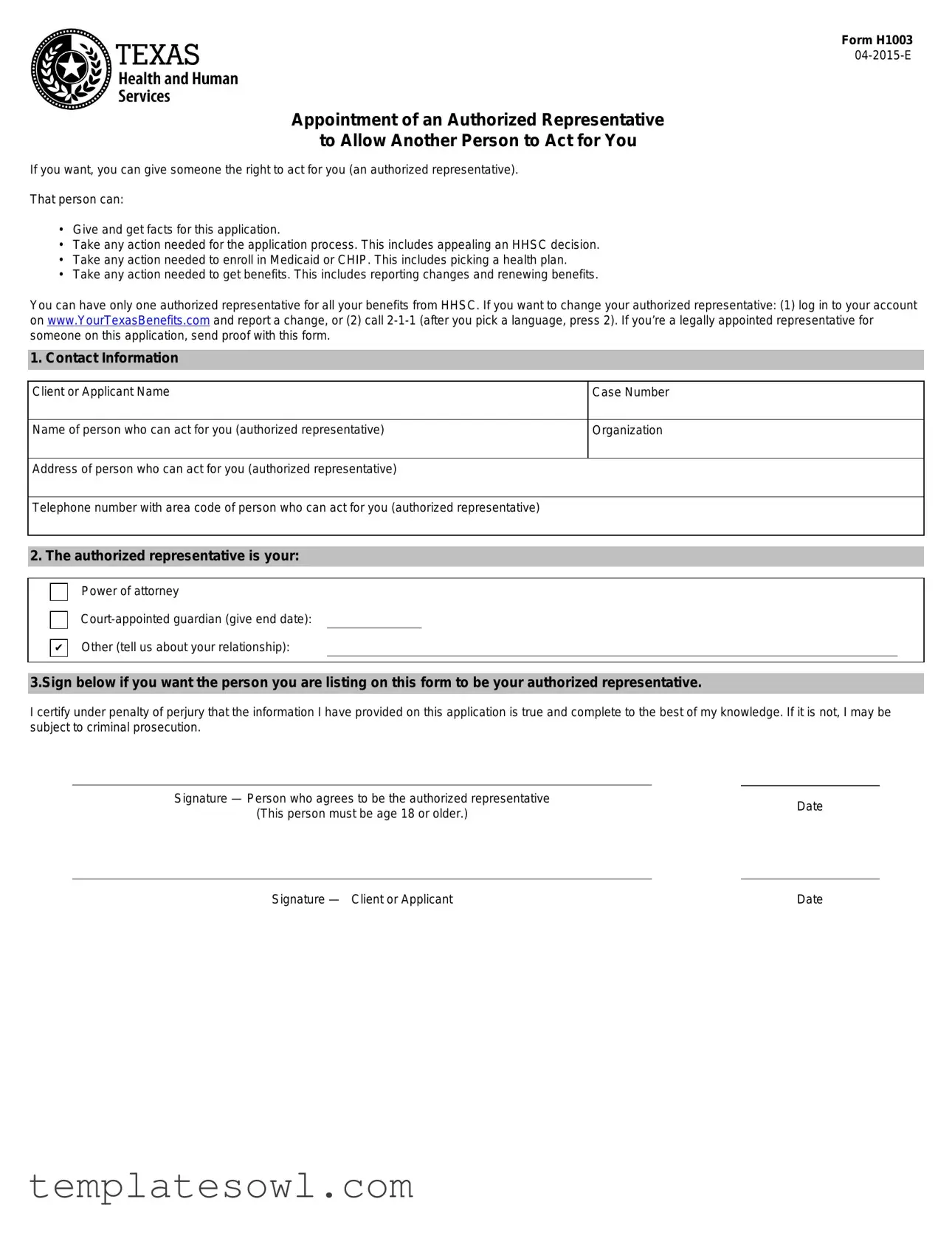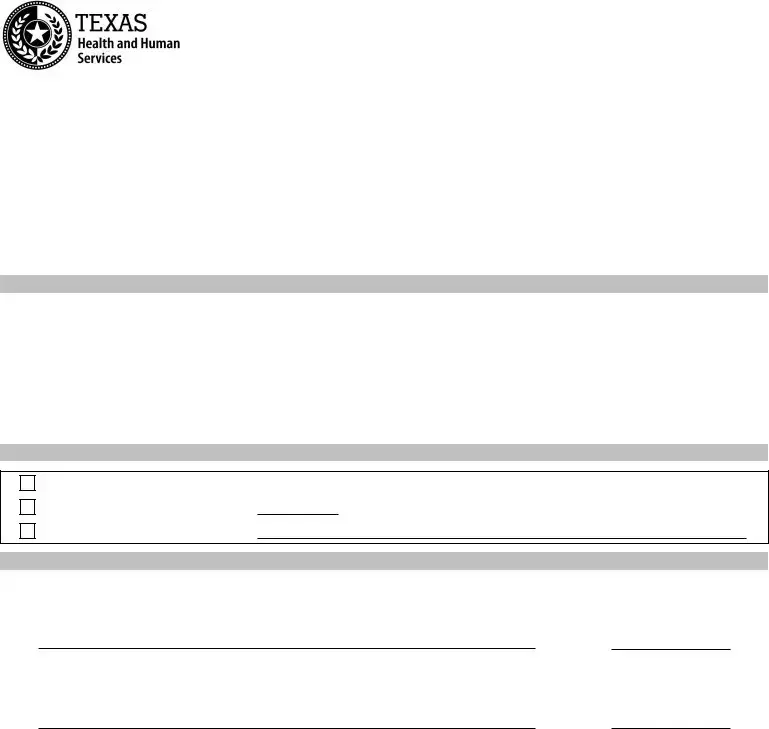What is the purpose of the H1003 form?
The H1003 form is designed for individuals who wish to designate someone else as their authorized representative. This representative can act on behalf of the individual in various matters related to applications for benefits through the Health and Human Services Commission (HHSC). By completing this form, the individual grants permission for the representative to obtain or provide information, appeal decisions, enroll in health programs, and manage benefit changes.
Who can I appoint as my authorized representative?
You can choose any adult person to represent you, such as a family member, friend, or advocate. This individual should be someone you trust to handle matters related to your benefits. Additionally, if you have a legally designated representative, such as a power of attorney or a court-appointed guardian, they can also serve in this role. Remember that only one authorized representative can be appointed for all benefits received from HHSC.
How do I change my authorized representative after submitting the form?
If you need to change your authorized representative at any time, you have two options. You can log into your account at www.YourTexasBenefits.com to report the change directly online. Alternatively, you can call 2-1-1 and follow the prompts to make your change. Make sure to provide the new representative's information for proper processing.
What information do I need to provide on the H1003 form?
When filling out the H1003 form, you will need to provide several details. This includes your name, case number, the name and contact information of the person you are appointing, and the nature of your relationship with that person. If applicable, you should also indicate if the authorized representative is a power of attorney or a court-appointed guardian, along with the end date for guardianship, if relevant.
Is it necessary to have proof of legal representation when submitting the H1003 form?
If you are appointing an authorized representative who is legally designated for you, such as a power of attorney or guardian, it is essential to send proof with the form. This ensures that HHSC has the necessary documentation to acknowledge the representative’s authority to act on your behalf.
What happens if I provide false information on the H1003 form?
It is crucial to provide truthful and complete information on the H1003 form. By signing the form, you certify that the information is accurate to the best of your knowledge. If it is later found that false information was provided, you may face penalties, including the possibility of criminal prosecution. Therefore, it’s important to double-check your details before submitting the form.

